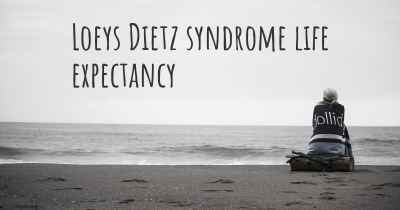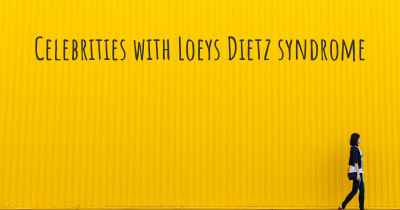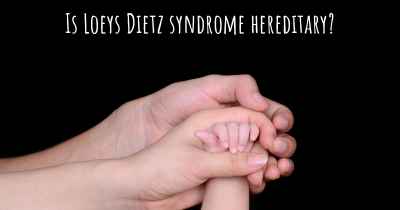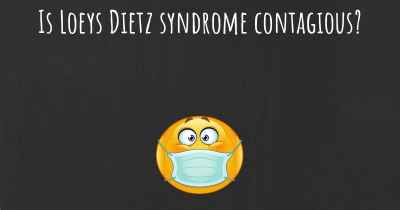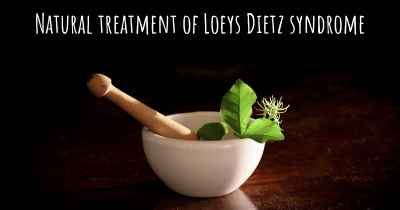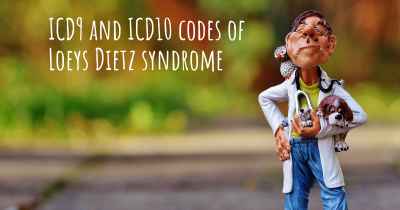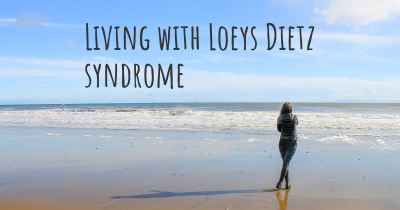What are the best treatments for Loeys Dietz syndrome?
See the best treatments for Loeys Dietz syndrome here
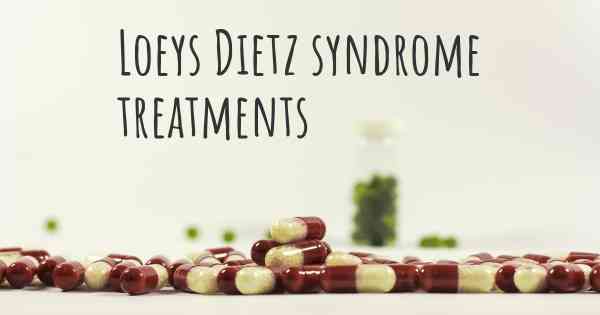
Treatments for Loeys Dietz Syndrome
Loeys Dietz Syndrome (LDS) is a rare genetic disorder that affects the connective tissues in the body. It is characterized by a variety of symptoms, including abnormalities in the heart, blood vessels, bones, and other organs. While there is no cure for LDS, there are several treatments available to manage the symptoms and improve the quality of life for individuals with this condition.
Cardiovascular Management
One of the most important aspects of treating LDS is managing the cardiovascular complications associated with the syndrome. Individuals with LDS are at an increased risk of developing aortic aneurysms and dissections, which can be life-threatening if left untreated. Regular monitoring of the aorta is crucial to detect any abnormalities early on. Medications such as beta-blockers and angiotensin receptor blockers (ARBs) may be prescribed to help reduce blood pressure and stress on the aorta. In some cases, surgical intervention may be necessary to repair or replace the affected blood vessels.
Orthopedic Care
Orthopedic issues are common in individuals with LDS, including joint hypermobility, scoliosis, and skeletal abnormalities. Physical therapy and regular exercise can help improve muscle strength and joint stability. Orthopedic braces or supports may be recommended to provide additional support and prevent further complications. In severe cases, surgical intervention may be necessary to correct skeletal abnormalities or spinal curvature.
Ophthalmologic Monitoring
Regular ophthalmologic evaluations are essential for individuals with LDS, as they are at an increased risk of developing eye problems such as myopia, cataracts, and retinal detachment. Early detection and treatment of these conditions can help prevent vision loss. Glasses or contact lenses may be prescribed to correct vision problems, and surgery may be required to address more severe eye complications.
Management of Other Organ Involvement
Loeys Dietz Syndrome can affect various organs in the body, including the lungs, skin, and gastrointestinal system. Regular monitoring and appropriate management of these organ systems are crucial to prevent complications. For example, individuals with LDS may require pulmonary function tests to assess lung function and may benefit from respiratory therapies. Skin care measures, such as avoiding excessive sun exposure and using moisturizers, can help manage skin fragility and reduce the risk of skin tears. Gastrointestinal issues, such as gastroesophageal reflux disease (GERD), may be managed with medications and dietary modifications.
Genetic Counseling and Psychological Support
Genetic counseling is an important aspect of managing Loeys Dietz Syndrome. It can help individuals and their families understand the genetic basis of the condition, assess the risk of passing it on to future generations, and make informed decisions regarding family planning. Additionally, individuals with LDS may benefit from psychological support to cope with the challenges associated with the syndrome. Counseling and support groups can provide emotional support, education, and resources to help individuals and their families navigate the physical and emotional aspects of living with LDS.
Conclusion
While there is no cure for Loeys Dietz Syndrome, a multidisciplinary approach to treatment can significantly improve the quality of life for individuals with this condition. Cardiovascular management, orthopedic care, ophthalmologic monitoring, and management of other organ involvement are essential components of treatment. Genetic counseling and psychological support are also crucial for individuals and their families. By addressing the various aspects of LDS, healthcare professionals can help individuals with this syndrome lead fulfilling lives.
Posted Feb 6, 2018 by Helene 1600
Posted May 12, 2019 by Sherri 800
LDS manifests itself in a number of ways; therefore, no two persons with LDS will have identical medical characteristics. It is recommended that you consult your physician or a local geneticist if you have questions about individual health concerns.
Medications: Pressure on the aorta (the largest artery leaving the heart) and other arteries can be controlled by the administration of medications that work to lessen the strain on the body’s major arteries by reducing heart rate and blood pressure. In mouse models of LDS the specific class of blood-pressure lowering medications known as angiotensin receptor blockers, has shown great benefit in reducing aneurysm growth. In people impacted by LDS, if this type of medication is used, it should be used at optimal titration. Angiotensin receptor blockers include medications by the name of Losartan, Irbesartan or Candesartan. Many people are also maintained on beta-blockers (Atenolol, Metoprolol). It is recommended that individuals with LDS remain on these medications even after surgical repair of aneurysms.
Imaging: Continued monitoring of the aorta through annual echocardiograms is necessary. A baseline CTA or MRA of the head, neck, chest, abdomen and pelvis should also be performed to detect and monitor aneurysm formation and/or dissections (tears). The frequency of these scans depends on aneurysm size and rate of growth, so it is recommended that individuals consult their doctor on the appropriate intervals for imaging. Individuals should try not to go more than two years without head-to-pelvis imaging. If a person is using MRA imaging for surveillance, every few imaging cycles a CTA of the head and neck should be considered, as this imaging has better clarity of small arteries in the head and neck.
Cervical Spine Imaging: X-rays of the cervical spine in the flexion and extension positions are recommended to assess for vertebral anomalies and/or instability. If there are any anomalies detected, consultation with an orthopedist is recommended. Rarely, surgery for cervical spine fusion is required. It is important to assess for cervical spine instability prior to undergoing any surgery, as this may impact intubation procedures.
Vascular Surgery: Vascular surgery is a widely recommended treatment option as a preventative surgery for individuals with a rapidly enlarging aorta or artery or a pronounced family history of arterial dissection. Aortic root replacement is the most common vascular surgery occurring in individuals with LDS, and it is highly successful. There are many examples of successful arterial repairs for aneurysms throughout the body through a variety of surgical interventions as vascular tissue is not typically weak or fragile in individuals with LDS.
Exercise Restrictions: Exercise restrictions are typically put in place to assist in slowing the rate of aortic and arterial aneurysm growth. It is advised that individuals with LDS avoid competitive sports, especially contact sports, and other exercises or muscle straining activities performed to the point of exhaustion. Individuals can and should remain active with aerobic types of activities that are performed in moderation. Exercises where you have to strain your muscles, such as push-ups, chin-ups, sit-ups, are to be avoided. Activities such as hiking, biking, jogging and swimming that help to naturally lower the heart rate and blood pressure should be a part of an individual's cardiovascular activity. A good recommendation for cardiovascular activities is to exercise only to a level where you can hold a conversation while performing the activity.
Orthopedics: Individuals with LDS may need orthopedic surgery or other interventions such as bracing for scoliosis, orthotics/surgeries for foot deformities or contractures or harnesses for congenital hip dislocation. Typically, surgery for pectus anomalies is pursued for cosmetic purposes and not out of medical necessity.
Allergies: Environmental and food allergies are increased in individuals with LDS and may require a consultation with an allergist or gastroenterologist. Allergic reactions may present as rhinitis or sinusitis, eczema, or hives. Gastrointestinal complaints can include the feeling of food getting stuck in your throat, diarrhea, abdominal pain or difficulty gaining weight. Some individuals have severe inflammatory disease of the esophagus or intestines that may need stricter intervention such as medications or feeding tubes to help with caloric intake.
It is always important to consult your doctor to determine an effective and personalized course of action.
Posted May 12, 2019 by Derek 4050
Posted May 14, 2019 by Glenn 2500
MRI of brain
CT of trunk
Surgical repairs when indicated to prevent emergent surgery
Posted May 15, 2019 by Vicki 1800
